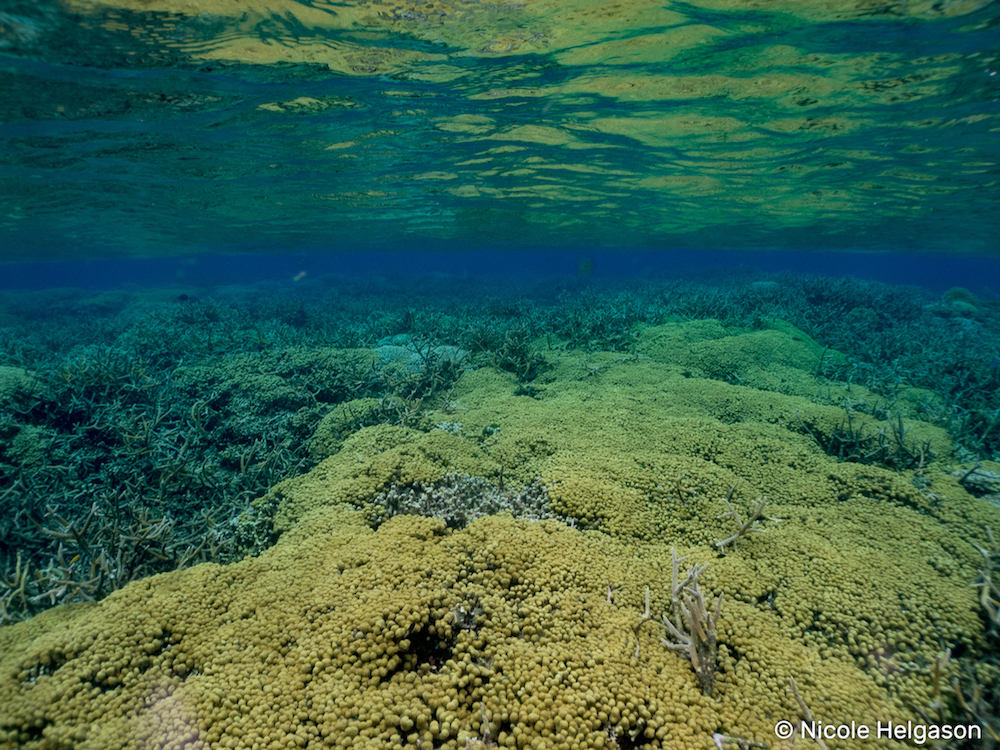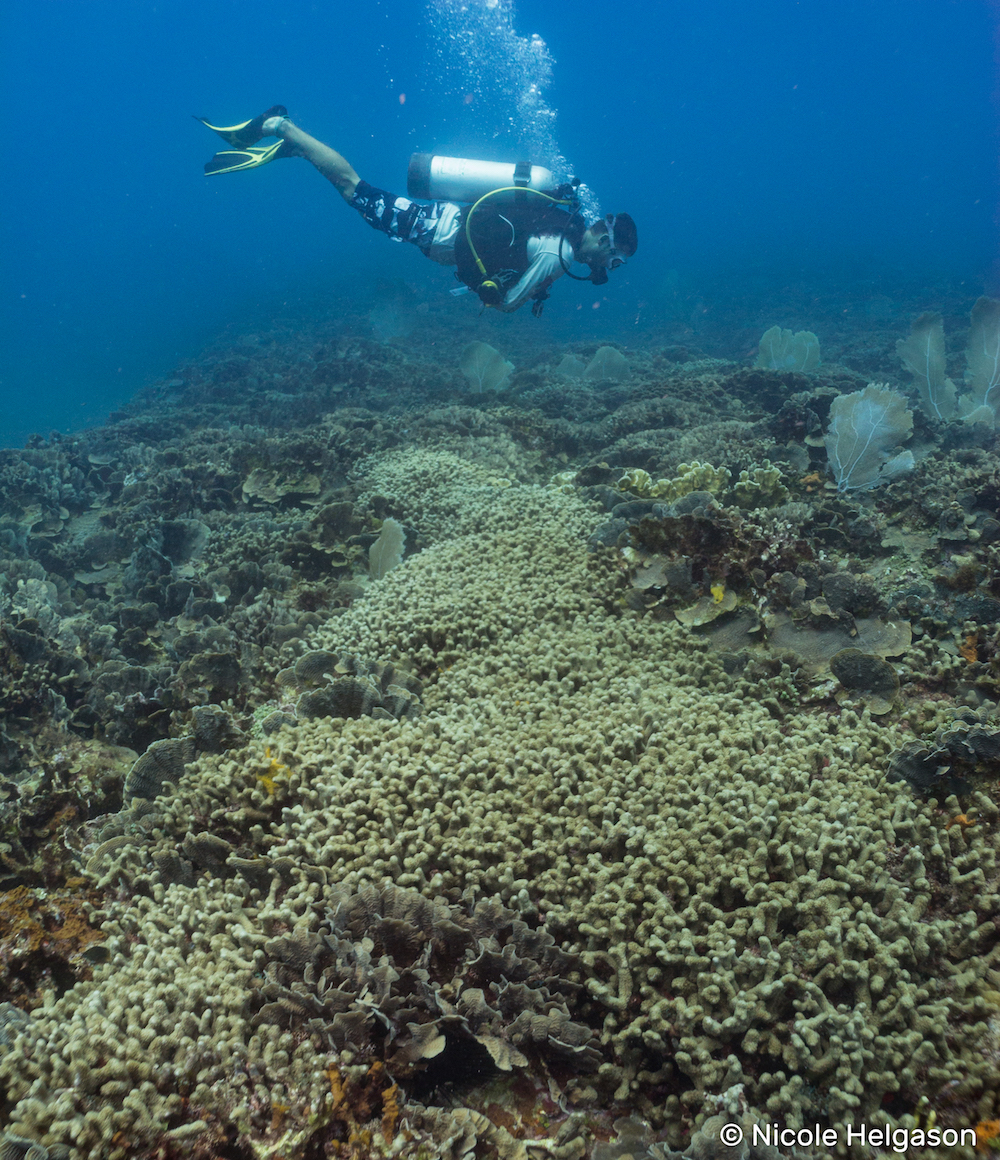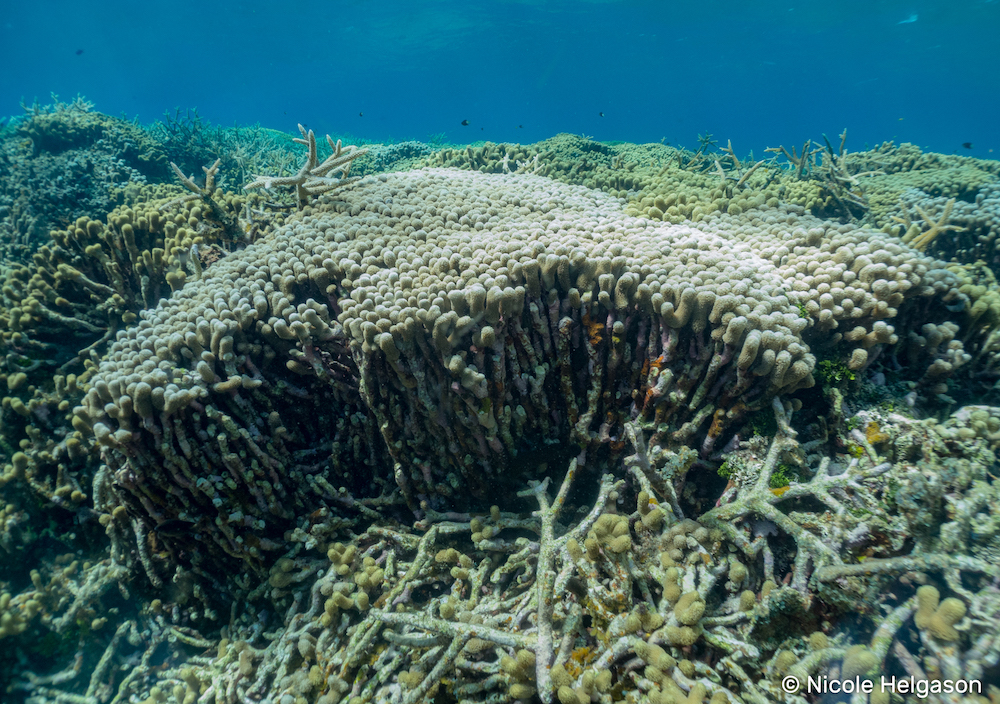Porites furcata
Porites furcata wasn’t a coral we paid much attention to until we came diving in Honduras. On it’s own a few lone branches of P. furcata (Branching Finger Coral) blends right into the reef. But once you see rolling hills of these tightly packed branches P. furcata is hard to miss.
Porites is a hardy species of coral common in the Caribbean. You will probably recognize the encrusting Mustard Hill Coral as it is one of my most common Porites corals in the Caribbean. Like the mustard hill coral, P. furcata has small corallites which are embedded in the surface of the coral.
Porites is quite resilient and has been found to be more resistant to bleaching compared to other branching species like Acropora. On some reefs in Honduras that have been hit by bleaching Porites is slowly taking over Acropora habitat.
Porites can be a dominate species on some reefs, and once it gets a foothold it can outcompete other coral species. In the picture below you can see a river of Porites inching its way through a lettuce coral habitat.
Branching Finger Coral
The common name for Porites furcata is the branching finger coral. This coral grows straight up and each branch can split into two or three smaller branched tips. When it grows tightly packed there might only be room for a single branch tip at the surface.
The branches can also be fairly long, although the visible live coral may only be the top few centimeters. In the picture below you can see where a part of the colony has collapsed revealing the long dead branch stalks.
As you can see the tightly packed branches leave little room for smaller fish to hide. While juvenile fish can still slip through the branch tips the colony doesn’t create the same complex branching habitat like Acropora does.
Porites furcata can be bright yellow, beige, or dullish gray. The polyps when fully extended have a fuzzy furry look. We guess that’s why it’s called Porites ‘fur’cata!


